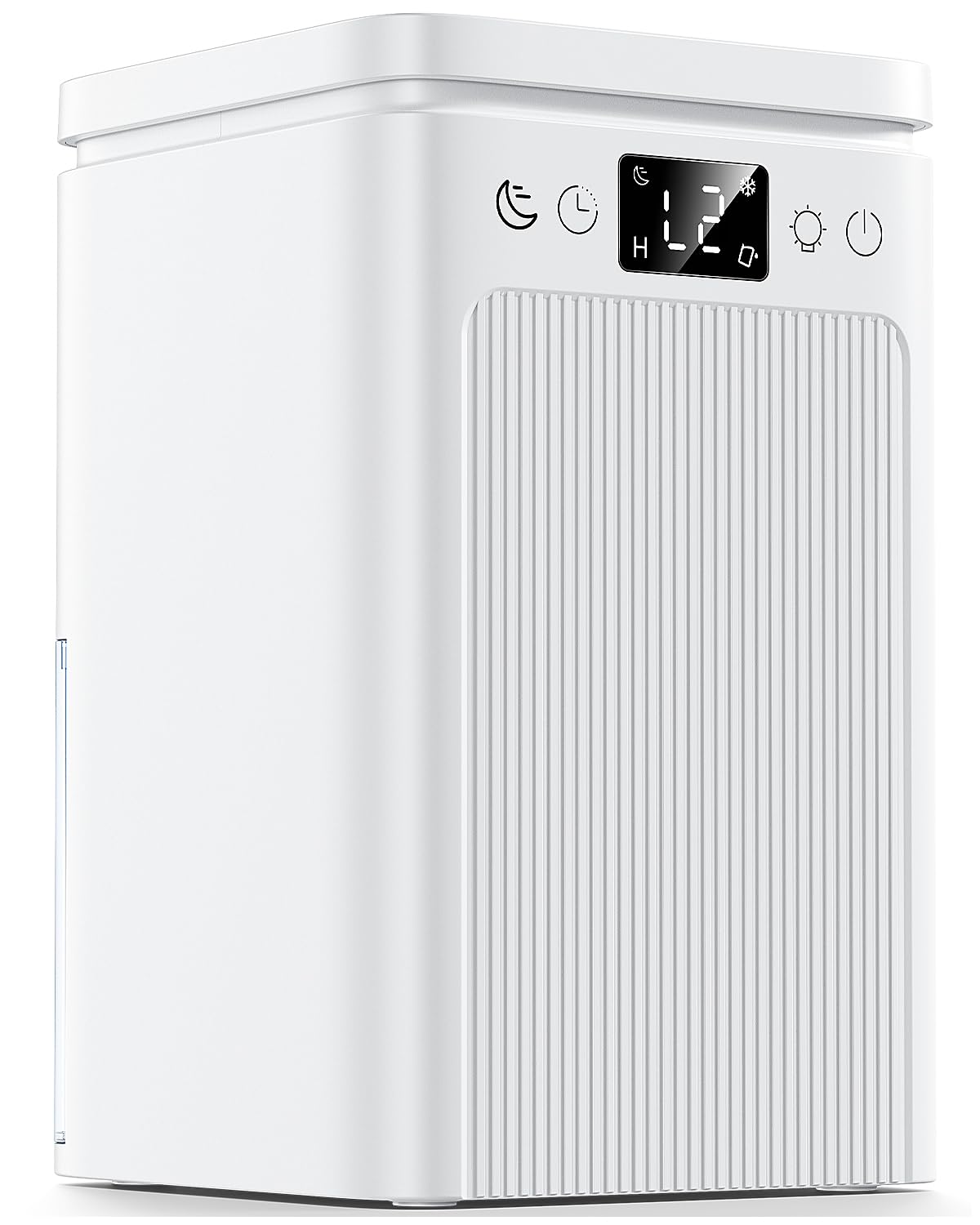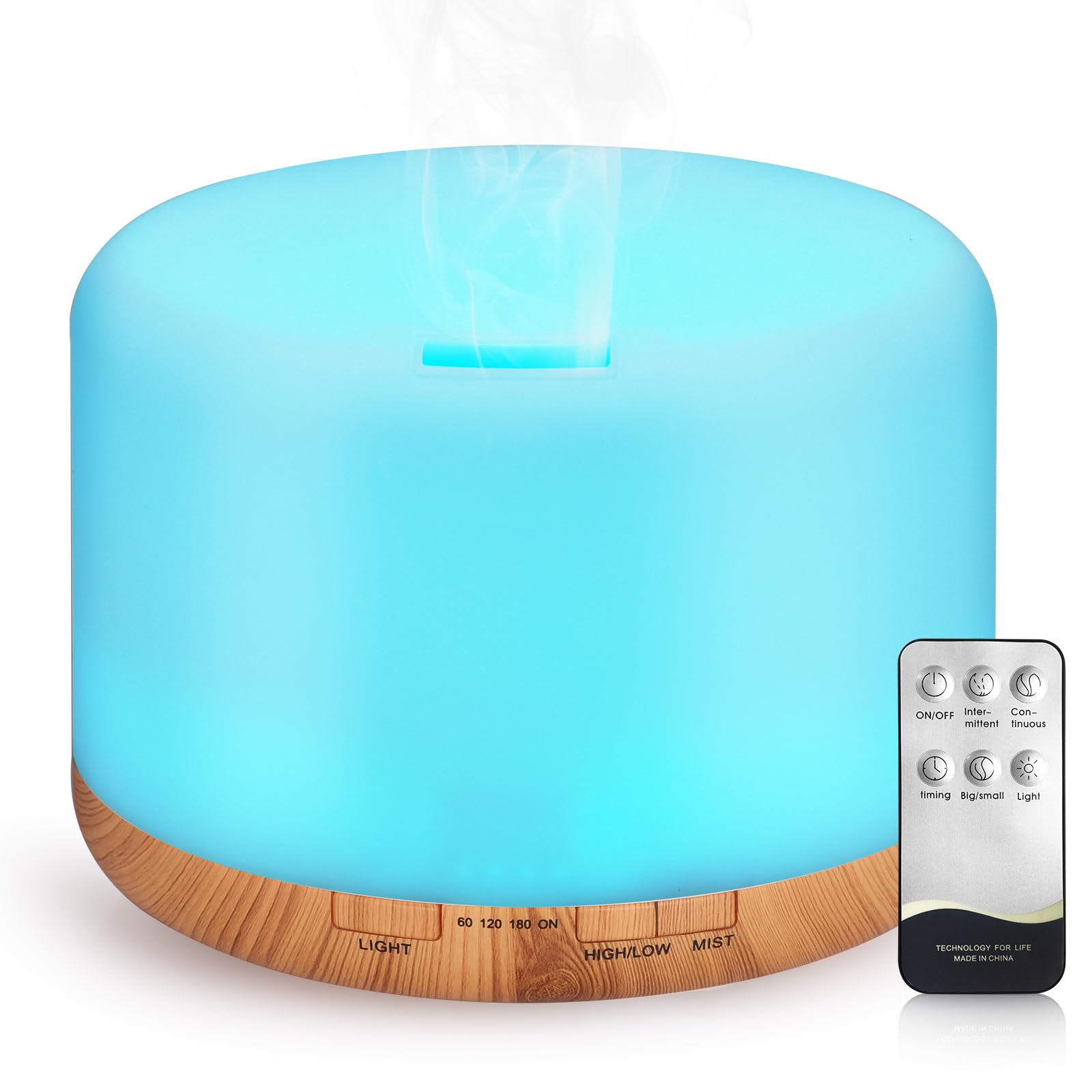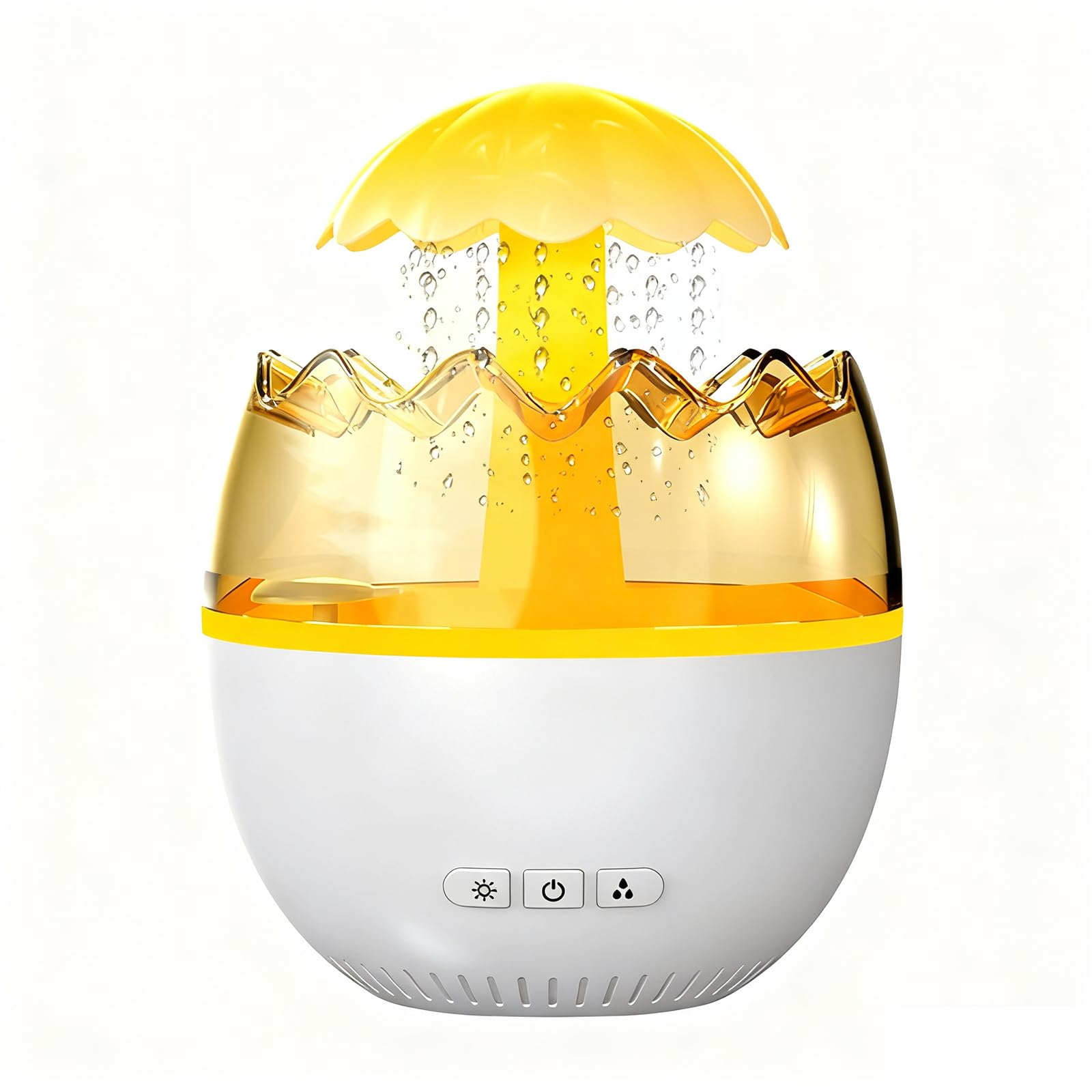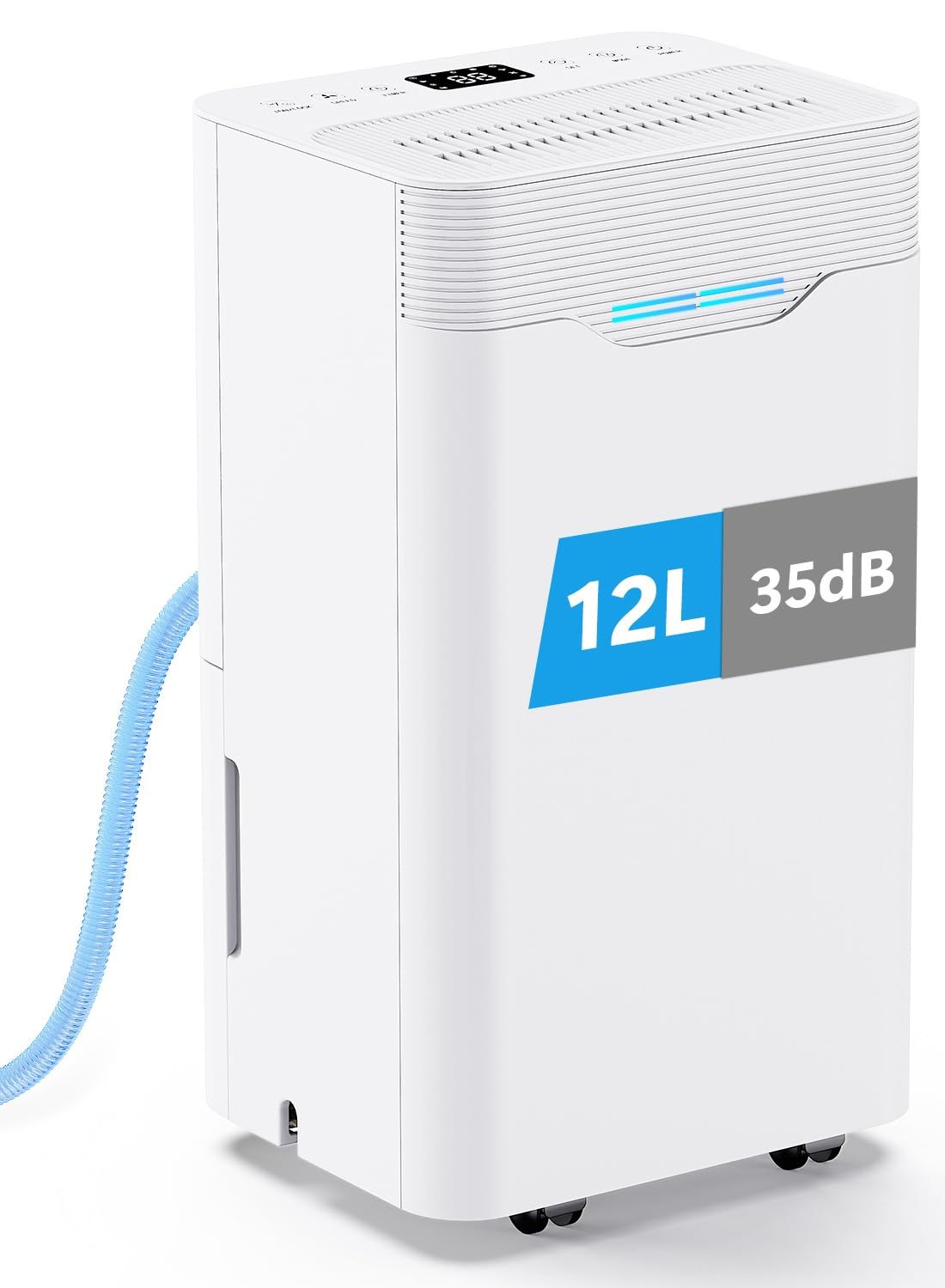Cold UK winters bring steamy windows, musty smells, and the odd patch of mould on external walls. The fix is not to dry your home to the bone but to keep humidity in a healthy middle ground where condensation does not form every morning and the air still feels comfortable to breathe. This guide explains ideal winter humidity targets for UK homes, why condensation happens, and how to balance dehumidifiers, ventilation, and gentle heating so rooms feel fresher without over drying.
Dry bedrooms benefit from humidifiers sized for the space.
Why condensation is worse in winter
Warm air carries more moisture than cold air. When that warm, moist indoor air meets a cold surface such as a single glazed window or a north facing corner, the air cools and drops water as condensation. Everyday life adds moisture all day long. Showers, boiling pasta, drying laundry on airers, even breathing while you sleep. In winter, building materials are colder and windows are shut for longer, so the same household routine creates more visible moisture.
Ideal winter humidity targets
Most UK homes feel comfortable around forty five to fifty five percent relative humidity in winter. In that range, airways do not feel too dry, static shocks are rare, and glass and paintwork stay mostly clear of daily water beads. Dropping below forty percent for long periods can make throats scratchy and wooden furniture creak. Sitting much above sixty percent for days at a time makes condensation and mould more likely. You do not need a perfect number every hour. Aim for a steady middle zone across the day and night.
Measure before you guess
Buy a simple digital hygrometer and place it out of direct sunlight at chest height. Check a few rooms at different times of day. Bedrooms push humidity up while you sleep. Kitchens and bathrooms spike during cooking and showers. Note patterns for a week so you can see when peaks happen and how long they last. That baseline makes it easier to choose a dehumidifier size and to set realistic targets.
Setting your dehumidifier for winter
Most modern units allow you to select a target. Start with fifty percent and adjust based on how the room feels and what the windows look like in the morning. If glass is dry and the air feels comfortable, you are already in a good place. If beads still form every day, step down to forty five percent for evening and night. Resist the urge to run the unit hard all day. Over drying a living space can feel harsh and may not reduce morning condensation much if the room cools several degrees overnight.
Gentle heat helps more than you think
Condensation is a temperature and moisture problem, not purely a moisture problem. A cold room with little airflow will fog up even when average humidity looks reasonable on your meter. Run gentle background heating in rooms that struggle with condensation so surfaces do not swing from cold to warm and back again. A small temperature rise, combined with a dehumidifier near the moisture source, often reduces window fog far more than pushing humidity down an extra five points.
Ventilation without wasting heat
Fresh air exchanges remove moisture and indoor pollutants, yet throwing windows open for hours is not appealing in January. Use short, sharp bursts. After a shower, open a window a crack for ten minutes with the door closed and the fan running. In the kitchen, use the extractor hood and keep a lid on pans. During laundry sessions, close the door of the drying room so the dehumidifier can recirculate the same air efficiently. These small actions let you keep most of your heat while shedding moist air where it counts.
Laundry is the hidden source
An airer covered in damp clothes will elevate humidity in any room. If you must dry indoors, choose a smaller room, close the door, and place the dehumidifier close to the airer on a continuous or laundry mode. Rotating heavy items once or twice helps expose more fabric to airflow. Once the washing is dry, let the unit run for a short period to dry the room itself. This routine often removes the musty smell that builds up in winter.
Desiccant vs compressor in UK winters
Compressor units are efficient in warmer rooms. Desiccant models hold performance better when room temperatures drop into low teens, such as unheated spare rooms or conservatories. If you want to control bedroom humidity overnight with minimal noise while the heating is low, a quiet compressor unit placed near the window can work well. For colder spaces, consider a desiccant that remains effective at lower temperatures. Either type benefits from a clear intake and a little space around the machine.
Setting realistic expectations
Perfectly dry windows every morning can be unrealistic in some homes with single glazing or large temperature swings. The goal is progress. Less water on the sills, fresher smelling rooms, and fewer black spots in cold corners over the season. If you reduce chronic damp and keep humidity mostly in the middle band, paint and plaster will stay healthier and fabrics will dry faster. Keep an eye on your hygrometer, not just on each morning’s glass.
Placement and door policy
For the room with the worst condensation, put the dehumidifier near the window wall or close to the door where moist air enters. Keep the intake and outlet clear and avoid pushing it deep into a corner. If your landing connects several bedrooms, a unit placed there with doors ajar may lower humidity for the whole floor, though you will get faster results by closing a single bedroom door and running the unit inside that room while you sleep.
When to bring in an air purifier
A dehumidifier tackles moisture but not airborne spores or dust. If you are cleaning up a mould patch or have allergy concerns, consider an air purifier with a sealed HEPA filter to capture fine particles as you treat the source. Keep using the dehumidifier to make conditions less friendly for mould growth. This one two approach is practical in older UK homes where cold corners can attract condensation in cold snaps.
Strong laundry performance and clear humidistats are common in dehumidifiers that suit UK homes in winter. After a mould episode, many households add a sealed‑filter air purifier sized for the room while cleaning and repainting.
FAQs
What winter humidity should I set on my dehumidifier?
Start at fifty percent. If morning windows still bead up, try forty five percent in the evening and overnight. Avoid running much below forty percent for days on end because rooms can feel overly dry.
Can I over dry my home?
Yes. Air that sits under forty percent for long periods can irritate airways and crack woodwork. Use a hygrometer and adjust your target to stay in the middle band that balances comfort and condensation control.
Should I open windows in winter if I have a dehumidifier?
Use short bursts in bathrooms and kitchens and keep drying rooms closed while the unit runs. Constantly open windows will force the machine to chase outside air, which is inefficient.
How long should I run the dehumidifier each day?
Run it during moisture peaks and for a short period afterwards. For bedrooms, a few evening hours plus a short morning run can work well. For laundry, run in continuous or laundry mode until clothes are dry and the room humidity drops back to the middle band.





